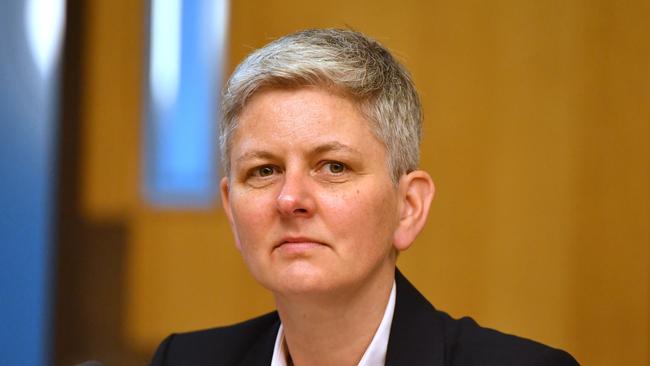New homes taking longer to build amid capacity constraints, says RBA’s Luci Ellis
Capacity constraints in the homebuilding sector have blown out the time to build the average new house to nine months with no end in sight, RBA’s Luci Ellis says.

Rolling shortages in labour and materials in the home-building sector have blown out the time to build the average new house from six to nine months, and the pressures on builder profits and costs are not set to end any time soon, Reserve Bank assistant governor Luci Ellis says.
In a speech to the Urban Development Institute of Australia on Wednesday morning, Dr Ellis said “the current pipeline will sustain activity for quite a while, but the backlogs and strained capacity will ultimately work themselves out”.
“Exactly when that will happen is hard to know. But when it does, we can expect some of the current rate of cost escalation and squeeze on margins to ease,” she said.
Jim Chalmers on Wednesday said he recognised that “the building industry is under extreme pressure because of the skyrocketing inflation”.
The Treasurer said “some of the conversations I have been having over the course of the last two days is about these quite extreme conditions that a lot of builders are dealing with, because they might have signed contracts 12 or 18 months ago”, and who are now having to deliver projects at much higher prices.
ABS data on Wednesday revealed that residential construction costs blew out by 10 per cent over the year to March, with official figures having shown they contributed a quarter of the 5.1 per cent annual jump in consumer prices that triggered the first rate hike in over a decade in May.
Property developers agreed with Dr Ellis’s and Dr Chalmers’ assessment, saying there was no obvious end in sight to the challenges facing the sector.
Max Shifman, the chief operating officer of Intrapac Property, said “on the ground, everywhere you look there are more and more delays, and more and more challenges, whether it’s for workers or materials”.
“I’d say if you are looking to build a new home now, you are looking at over 12 months before builders are able to start work,” Mr Shifman said.
Mr Shifman, who is also UDIA’s national president, said higher building costs could be the “new normal” for Australia.
“With so much happening on a global scale, and then you layer on the public works that are projected to last for decades, whatever cost escalation happens over the next few years could become the new normal,” he said.
Mr Shifman called on the newly installed Labor government to plug skills gaps via an expanded migration program, to complement the major spending commitments in vocational training.
Dr Chalmers said he “recognised” the challenges facing builders, and that “we will work with them to the extent that we can”.
“We have been very clear for some time now that we do need to ensure that we have the best possible mix of training people here for opportunities (as well as) a good, responsible (and) robust migration program,” he said.
Joanna Russell, general manager of retail development at Frasers Property, said there were “a lot of pressures around construction costs”, which were amplified from “working in a legislative framework that moves slowly”.
“If we can move the planning system in a faster manner and be more flexible in the outcomes that can be achieved, the private sector is going to be able to afford to build innovative and affordable homes,” Ms Russell said.
The Housing Industry Australia’s executive director of industry policy, Geordan Murray, said builders had order books stretching into 2023, and that the cost crunch facing the industry would likely extend “closer to two years”.
“There’s definitely a long tail in it. The pipeline of work that builders have on their books now suggests the level of building will remain elevated for a while to come yet,” Mr Murray said.
Dr Ellis said the central bank also expected “that construction of new homes will remain solid for the next couple of years”.
“The housing stock will therefore continue to expand as a result,” she said. “We expect it will expand at rates similar to the first decade of this century, but not as much as during the boom in apartment building in the second half of the 2010s.
“This is likely to still be enough to keep the housing stock growing faster than the population.”



